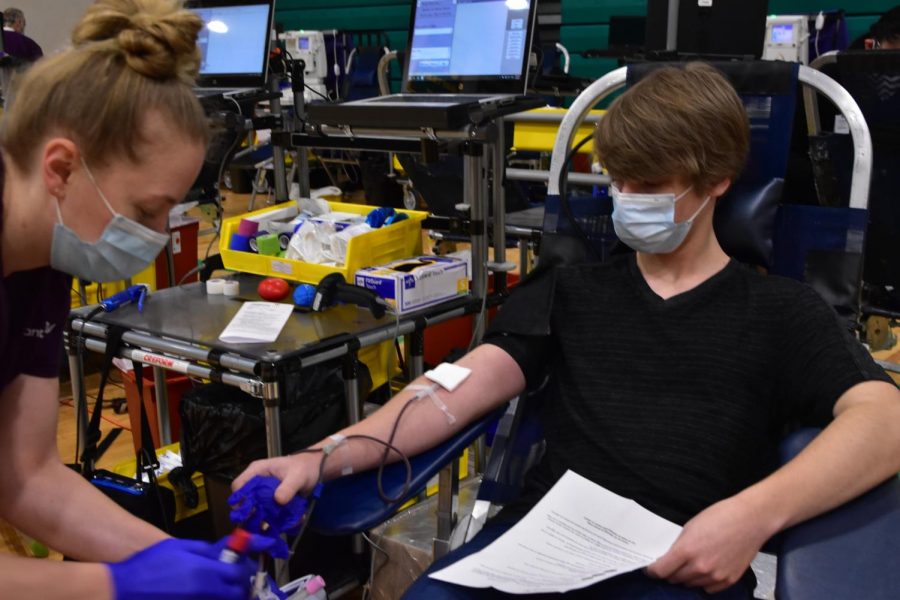The Drive for the Blood
March 5, 2021
At 8 am, Friday March 5th, at Lakeland High School, the annual blood drive takes place.
Giving blood helps the community. It helps people in surgery or people who got into an accident. It also helps those who are recovering or being treated for cancer.
Students who give blood might experience side effects after. The most common is fatigue and lightheadedness. Other side effects might include bruising and bleeding around the needle site.
After giving blood, you must wait for about eight weeks before you can donate again. This is due to the need for the body to create new blood cells to replace the ones donated.
Students had the option to sign up by filling out forms handed out by the office. The required age was 16 years old. The goal for the amount of students to sign up was 60. This goal was crushed with over a hundred students who signed up.
Giving blood is a process that lasts about 15 minutes. However, waiting in line and recovering afterwards increases the process to anywhere from 45 to 60 minutes.
Frank Vieira is a counselor at LHS and someone who helps with the blood drive every year. He is a strong advocate for giving blood. He also plans to keep up his tradition of giving blood every year.
“It is a great way to help the community and others. There is no pressure to donate blood, but when students do we are grateful,” Vieria said.
One sophomore giving blood to the drive, Ryan Genteman, thought that the way they encouraged students to donate was effective and even convinced him to donate.
“I believe the enticement of missing class, learning your blood type, and snacks combined to sway people to sign up.”
Many students have been enticed by the offer of learning your blood type when you give blood.
Genteman was brought in by the promise of knowing your blood type and even the snacks after donating.
“I am giving blood because I want to learn my blood type and snacks would be pretty good,” stated Genteman.
